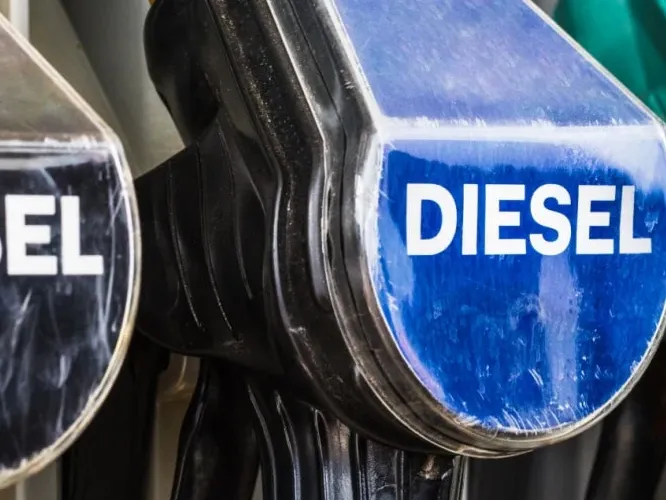No. 2 diesel fuel is a widely used energy source, especially in transportation, industry, and agriculture. It provides high energy output and efficiency, making it a preferred choice for trucks, buses, trains, and heavy machinery. But what exactly is No. 2 diesel, and how does it compare to other fuels? This article explores its properties, uses, and evolving role in a cleaner energy future.
Understanding No. 2 Diesel Fuel
No. 2 diesel fuel is a distillate fuel that falls under the classification of middle distillates, meaning it is heavier than gasoline but lighter than residual fuels. It is primarily used in compression-ignition engines (diesel engines), which rely on heat from compressed air to ignite the fuel.
Key Properties of No. 2 Diesel
Energy-Dense: No. 2 diesel contains more energy per gallon than gasoline, providing better fuel efficiency.
Higher Flash Point: It has a higher flash point than gasoline, making it less volatile and safer to store.
Viscosity and Lubrication: The fuel is thicker than gasoline, helping lubricate engine components.
Ultra-Low Sulfur Diesel (ULSD) and No. 2 Diesel
To reduce emissions and meet environmental regulations, many countries have mandated the use of Ultra-Low Sulfur Diesel (ULSD) instead of traditional No. 2 diesel. ULSD contains a maximum of 15 parts per million (ppm) of sulfur, significantly lower than older diesel fuels that had up to 5,000 ppm.
Benefits of ULSD
Lower Emissions: Reduces sulfur dioxide (SO₂), which contributes to acid rain and respiratory issues.
Improved Engine Longevity: Less sulfur reduces engine deposits, keeping components cleaner.
Compatibility with Modern Engines: Many modern diesel engines require ULSD to comply with emission standards.
However, ULSD has a lower lubricity than traditional No. 2 diesel, which can increase wear on fuel system components. To counter this, fuel manufacturers add lubricity enhancers.
Biodiesel and No. 2 Diesel Blends
With growing concerns about fossil fuel dependency, biodiesel has emerged as an alternative to petroleum-based diesel. Biodiesel is derived from vegetable oils, animal fats, or recycled cooking grease.
Common No. 2 Diesel Blends with Biodiesel
B5 (5% biodiesel, 95% petroleum diesel) – Can be used in most diesel engines without modification.
B20 (20% biodiesel, 80% petroleum diesel) – Provides better emissions reduction while maintaining good fuel efficiency.
B100 (100% biodiesel) – Requires modifications to diesel engines due to differences in viscosity and energy content.
Biodiesel blends improve lubricity and reduce greenhouse gas emissions, but they can also lead to fuel system clogging if not properly maintained.
Storage and Handling of No. 2 Diesel
Proper storage and handling of No. 2 diesel fuel are crucial to maintaining its quality and preventing contamination.
Best Practices for Diesel Storage
Use Proper Tanks – Store diesel in sealed, rust-free metal or high-density polyethylene tanks to prevent contamination.
Keep Tanks Full – Reduces condensation, which can lead to water buildup and microbial growth.
Use Additives – Anti-gel additives help prevent fuel gelling in cold temperatures.
Regular Maintenance – Periodically check for water contamination and clean storage tanks.
Contaminated diesel fuel can cause engine deposits, reduced efficiency, and increased wear on fuel injectors.
No. 2 Diesel Fuel and Fuel Economy
No. 2 diesel offers better fuel economy compared to gasoline due to its higher energy density. However, factors such as engine type, driving habits, and fuel quality affect efficiency.
How to Maximize Diesel Fuel Efficiency
Regular Maintenance – Change fuel filters and perform scheduled engine check-ups.
Proper Tire Inflation – Underinflated tires increase rolling resistance, reducing fuel economy.
Use High-Quality Fuel – Avoid contaminated or low-grade diesel that can cause engine deposits.
Future of No. 2 Diesel Fuel
As governments push for cleaner energy solutions, the diesel industry is evolving. Some future trends include:
Renewable Diesel – A more refined version of biodiesel that is chemically similar to petroleum diesel.
Synthetic Diesel – Produced from natural gas or biomass through the Fischer-Tropsch process.
Hydrogen-Powered Diesel Engines – A hybrid system that reduces emissions while maintaining diesel’s efficiency.
Conclusion
No. 2 diesel fuel remains a crucial energy source for transportation, industry, and agriculture. It offers high energy content, efficiency, and engine longevity, but its environmental impact has led to stricter regulations and cleaner alternatives like ULSD and biodiesel blends.
With ongoing advancements in fuel technology, the future of diesel fuel will continue to adapt to meet environmental standards while providing reliable energy for various industries.
Related topics:

